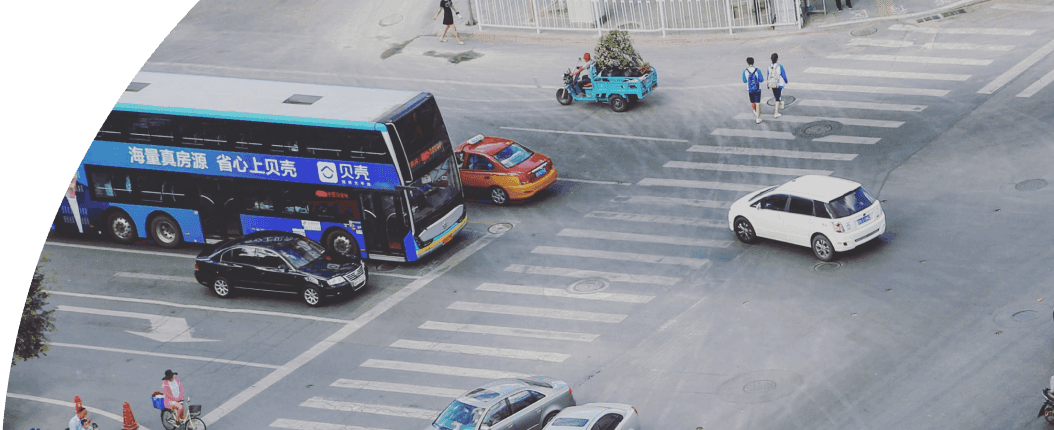
News
Tell the Federal Highway Administration to make good street design the standard
By Smart Growth America,
 THIS DOESN'T LOOK LIKE A HIGHWAY. US-62 in downtown Hamburg, NY is part of the National Highway System—and a great example of why the system's design standards should be flexible. Photo by Dan Burden.
The Federal Highway Administration (FHWA) is poised to issue new guidance about street design across the country. Will the new guidance include walking, bicycling, and transit facilities?
Last month, FHWA proposed revisions to its rule governing design standards for the National Highway System (NHS). That system includes interstates and other high-speed, high-volume roads, but it also includes a whole lot of routes you’d more likely call “Main Street.” Thousands of miles of the NHS are streets serving commercial centers, homes, shops, parks, schools, and hospitals—places where people often walk, bike, or take public transportation, in addition to driving.
Given this reality, you’d expect FHWA to recommend context-sensitive, multimodal design standards. This kind of approach—which planning and design professionals nationwide use and endorse—offers a wider set of possible street designs, since what works well on a highway might not work well on a street in town.
Yet the only street design guidance included in FHWA's draft rule is 2011's Policy on the Geometric Design of Highways and Streets (aka, the “Green Book”), published by the American Association of State Highway and Transportation Officials. While this document allows for some design flexibility, it offers minimal instruction for the development and integration of appropriate walking, bicycling, and transit facilities.
Different design standards would make streets safer for everyone. Specifically, the Urban Street Design Guide and Urban Bikeway Design Guide, published by the National Association of City Transportation Officials, Walkable Urban Thoroughfares: A Context-Sensitive Approach: An ITE Recommended Practice, developed by the Institute of Transportation Engineers and the Congress for the New Urbanism, and FHWA's own Separated Bike Lane Planning and Design Guide. FHWA already supports these documents, and citing them as standards would help state and local agencies plan and design great streets for people walking, bicycling, taking transit, and driving.
Tell FHWA that good street design should be standard:
THIS DOESN'T LOOK LIKE A HIGHWAY. US-62 in downtown Hamburg, NY is part of the National Highway System—and a great example of why the system's design standards should be flexible. Photo by Dan Burden.
The Federal Highway Administration (FHWA) is poised to issue new guidance about street design across the country. Will the new guidance include walking, bicycling, and transit facilities?
Last month, FHWA proposed revisions to its rule governing design standards for the National Highway System (NHS). That system includes interstates and other high-speed, high-volume roads, but it also includes a whole lot of routes you’d more likely call “Main Street.” Thousands of miles of the NHS are streets serving commercial centers, homes, shops, parks, schools, and hospitals—places where people often walk, bike, or take public transportation, in addition to driving.
Given this reality, you’d expect FHWA to recommend context-sensitive, multimodal design standards. This kind of approach—which planning and design professionals nationwide use and endorse—offers a wider set of possible street designs, since what works well on a highway might not work well on a street in town.
Yet the only street design guidance included in FHWA's draft rule is 2011's Policy on the Geometric Design of Highways and Streets (aka, the “Green Book”), published by the American Association of State Highway and Transportation Officials. While this document allows for some design flexibility, it offers minimal instruction for the development and integration of appropriate walking, bicycling, and transit facilities.
Different design standards would make streets safer for everyone. Specifically, the Urban Street Design Guide and Urban Bikeway Design Guide, published by the National Association of City Transportation Officials, Walkable Urban Thoroughfares: A Context-Sensitive Approach: An ITE Recommended Practice, developed by the Institute of Transportation Engineers and the Congress for the New Urbanism, and FHWA's own Separated Bike Lane Planning and Design Guide. FHWA already supports these documents, and citing them as standards would help state and local agencies plan and design great streets for people walking, bicycling, taking transit, and driving.
Tell FHWA that good street design should be standard:

1350 I St NW Suite 425 Washington, DC 20005
[email protected]© 2025 Smart Growth America. All rights reserved
Site By3Lane Marketing







